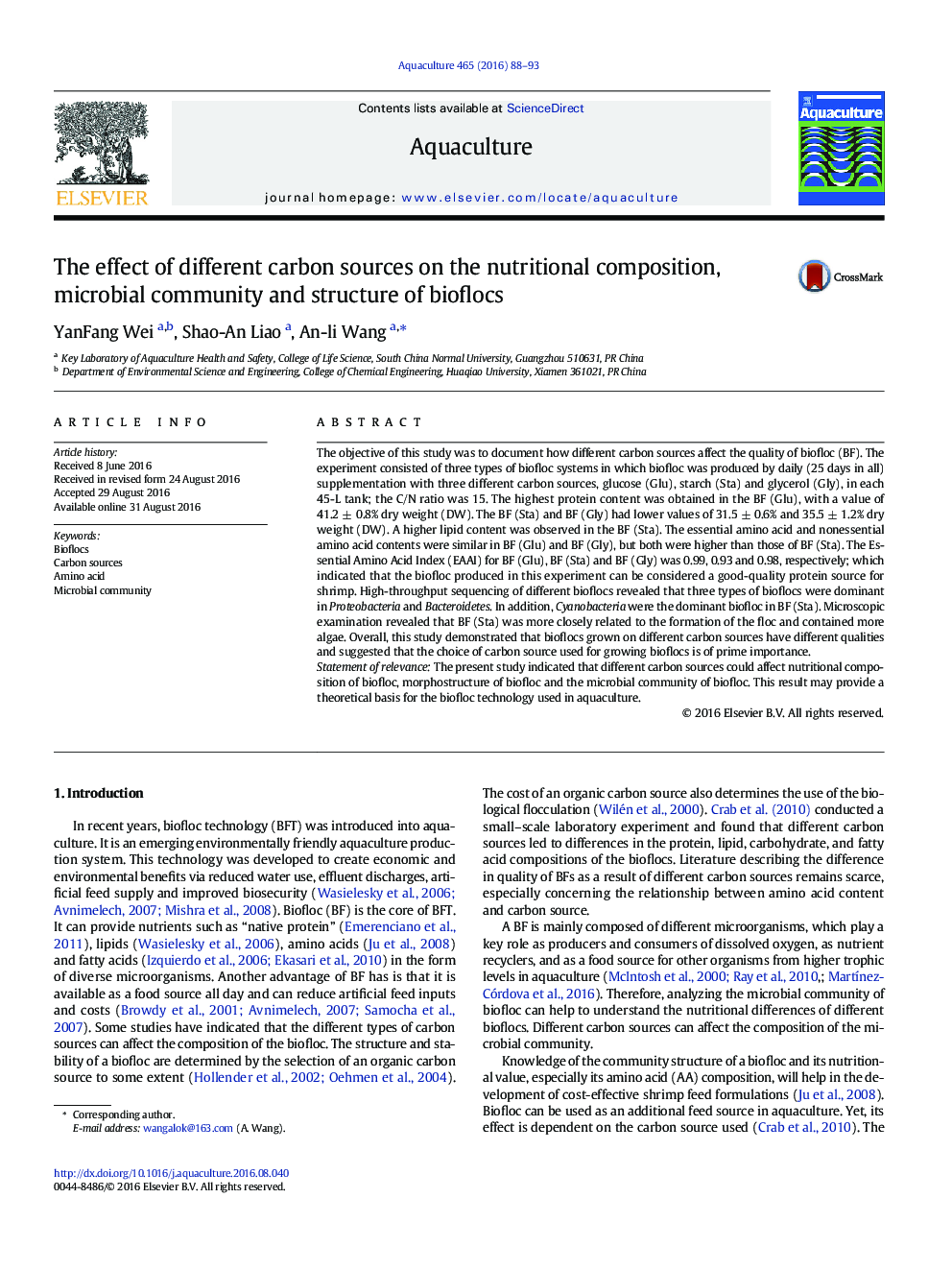| Article ID | Journal | Published Year | Pages | File Type |
|---|---|---|---|---|
| 2421316 | Aquaculture | 2016 | 6 Pages |
•Nutritional composition of biofloc affected by the carbon sources.•Morphostructure of biofloc affected by the carbon sources.•Carbon sources could influence the microbial community of biofloc by high-throughput sequencing.
The objective of this study was to document how different carbon sources affect the quality of biofloc (BF). The experiment consisted of three types of biofloc systems in which biofloc was produced by daily (25 days in all) supplementation with three different carbon sources, glucose (Glu), starch (Sta) and glycerol (Gly), in each 45-L tank; the C/N ratio was 15. The highest protein content was obtained in the BF (Glu), with a value of 41.2 ± 0.8% dry weight (DW). The BF (Sta) and BF (Gly) had lower values of 31.5 ± 0.6% and 35.5 ± 1.2% dry weight (DW). A higher lipid content was observed in the BF (Sta). The essential amino acid and nonessential amino acid contents were similar in BF (Glu) and BF (Gly), but both were higher than those of BF (Sta). The Essential Amino Acid Index (EAAI) for BF (Glu), BF (Sta) and BF (Gly) was 0.99, 0.93 and 0.98, respectively; which indicated that the biofloc produced in this experiment can be considered a good-quality protein source for shrimp. High-throughput sequencing of different bioflocs revealed that three types of bioflocs were dominant in Proteobacteria and Bacteroidetes. In addition, Cyanobacteria were the dominant biofloc in BF (Sta). Microscopic examination revealed that BF (Sta) was more closely related to the formation of the floc and contained more algae. Overall, this study demonstrated that bioflocs grown on different carbon sources have different qualities and suggested that the choice of carbon source used for growing bioflocs is of prime importance.Statement of relevanceThe present study indicated that different carbon sources could affect nutritional composition of biofloc, morphostructure of biofloc and the microbial community of biofloc. This result may provide a theoretical basis for the biofloc technology used in aquaculture.
